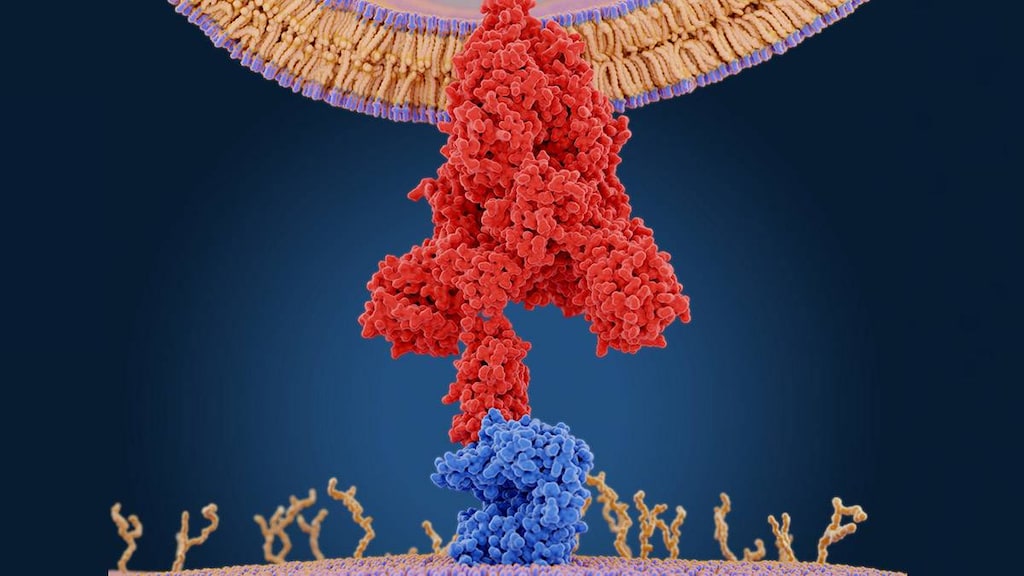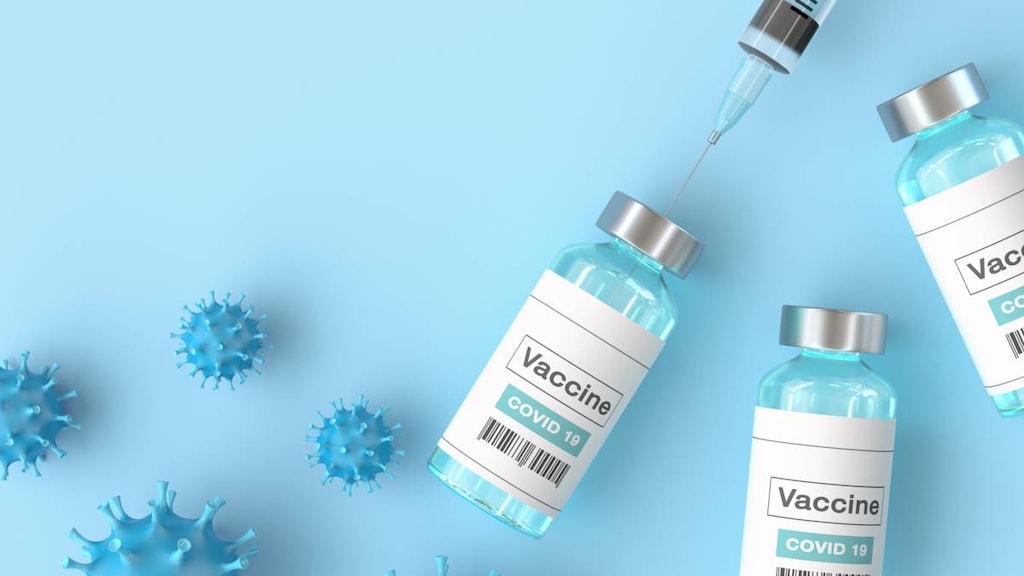New Coronavirus Targets ACE2 - A New Piece Of The Puzzle

-
COVID-19 is the new name for the disease caused by SARS-CoV-2, the new coronavirus making headlines
-
Angiotensin-converting enzyme 2 (ACE2) thought to be a target for SARS-CoV-2
-
AI (artificial intelligence) used to help identify preventative treatments
-
Smokers may be more susceptible
SARS-CoV-2 (severe acute respiratory syndrome coronavirus 2) is thought to target angiotensin-converting enzyme 2 (ACE2), according to researchers. ACE2 is a protein found on the surface of certain cells deep in the airways. By binding to ACE2 receptors the virus is able to enter the cells and cause an infection. ACE2 is the same receptor targeted by the SARS virus that caused an epidemic in 2003.
As researchers rush to learn more about COVID-19, which is the name given to the new respiratory disease caused by SARS-CoV-2, ACE2 is being used by drug developers looking for preventative treatments, as well as scientists looking to identify who is most susceptible to the disease.
ACE2 and drug development
Patients with COVID-19 are currently being treated with drugs such as oseltamivir (Tamiflu) used in combination with the anti-HIV drug lopinavir + ritonavir (Kaletra, Aluvia), and experimental drugs such as Remdesivir. While further investigations are being carried out to learn more about how effective these drugs are for treating COVID-19, other groups are also racing to develop vaccines and other treatments.
Following reports that ACE2 is a target for the virus, researchers in India have suggested potential roles for losartan and telmisartan in helping to prevent infection. These two drugs are angiotensin II receptor blockers and are currently used to treat high blood pressure.
Two AI (artificial intelligence) drug discovery groups have also used the information about ACE2 to identify potential drugs that could be used to block infection. BenevolentAI has been used to identify Baricitinib (Olumiant), which is a JAK inhibitor used to treat rheumatoid arthritis. Baricitinib also binds to the enzyme adaptor-associated protein kinase 1 (AAK1), which is involved in the process of bringing material (such as a virus) into a cell. It is thought the drug might help to prevent infection by stopping the virus from getting into cells, and also reduce inflammation associated with the disease. Insilico Medicine, a Hong Kong-based start-up, has also used its AI algorithms to identify novel drugs that might limit the ability of SARS-Cov-2 to replicate in cells. It plans to make and test the novel drugs it has identified, but is looking for partners to help.
ACE2 and susceptibility
Research involving lung samples taken from 224 patients indicates that people who smoke may be more susceptible to developing COVID-19. Significantly higher expression of the ACE2 gene was found in samples from smokers compared with samples from non-smokers. No significant difference was observed in ACE2 gene expression, however, between gender groups (male vs. female), age groups (>60 years vs. <60 years), or racial groups (asian vs. caucasian).
ACE2 virus receptors were specifically found to be concentrated in a small population of type-II alveolar cells (AT2) located in the lungs, according to another group of researchers looking at samples from 8 patients. They also found these cells expressed other genes favoring the viral process. While their results also suggested that the cells capable of binding the virus were more abundant in the sample taken from the one Asian donor in the group, this was not observed in the study with more samples.
Like with SARS, COVID-19 appears to be more common in men than women. It also tends to affect slightly older men. The reasons for this are not fully understood, but it may be that smoking status plays some role, given that nearly 50 percent of men in China smoke compared to less than 2 percent of women.
More pieces to the puzzle
In the rush to make new information available about SARS-CoV-2, research, like that mentioned above, is being published before it is peer reviewed. It’s important to note that more research needs to be undertaken to help determine which drug therapies are truly effective, to identify other possible drug targets, and also to identify those people most at risk from the virus. The identification of ACE2 is a step forward, but just one piece of the puzzle.
Article references
- World Health Organization (WHO). (February 12, 2020) Breaking. "We now have a name for the #2019nCoV disease: COVID-19. I'll spell it: C-O-V-I-D hyphen one nine - COVID-19". [Twitter Post]. Retrieved from https://twitter.com/who/status/1227248333871173632.
- Hoffmann M, Kleine-Weber H, Kruger N et al. January 31, 2020. The novel coronavirus 2019 (2019-nCoV) uses the SARS-coronavirus receptor ACE2 and the cellular protease TMPRSS2 for entry into target cells. bioRxiv doi: https://doi.org/10.1101/2020.01.31.929042 [Accessed February 17, 2020].
- Letko M, Munster V. January 22, 2020. Functional assessment of cell entry and receptor usage for lineage B β coronaviruses, including 2019-nCoV. bioRxiv 2020.01.22.915660; doi: 10.1101/2020.01.22.915660 [Accessed February 17, 2020].
- Phadke MA, Saunik S. Response to the emerging novel coronavirus outbreak. January 31, 2020. BMJ 2020;368. doi: https://doi.org/10.1136/bmj.m406 [Accessed February 17, 2020].
- Richardson P, Griffin I, Tucker C et al. The Lancet. February 3, 2020. Baricitinib as potential treatment for 2019-nCoV acute respiratory disease. doi:https://doi.org/10.1016/S0140-6736(20)30304-4 [Accessed February 17, 2020].
- C&EN. Two groups use artificial intelligence to find compounds that could fight the novel coronavirus. February 4, 2020. Available at: https://cen.acs.org/physical-chemistry/computational-chemistry/Artificial-intelligence-finds-drug-that-could-fight-Wuhan-coronavirus/98/i6 [Accessed February 17, 2020].
- Zhao Y, Zhao Z, Wang Y et al. January 26, 2020. Single-cell RNA expression profiling of ACE2, the putative receptor of Wuhan 2019-nCov. bioRxiv doi: https://doi.org/10.1101/2020.01.26.919985 [Accessed February 17, 2020].
- Cai, G. Bulk and Single-Cell Transcriptomics Identify Tobacco-Use Disparity in Lung Gene Expression of ACE2, the Receptor of 2019-nCov. Preprints 2020, 2020020051. doi: 10.20944/preprints202002.0051.v2. [Accessed February 17, 2020].
- Guan WJ, Ni ZY, Hu Y, et al. February 9, 2020. Clinical characteristics of 2019 novel coronavirus infection in China. medRxiv doi: https://doi.org/10.1101/2020.02.06.20020974 [Accessed February 17, 2020].
- Statista. Share of adult population who smoke in China from 2000 to 2016, by gender. Available at: https://www.statista.com/statistics/916348/china-share-of-smoking-adults-by-gender/ [Accessed February 17, 2020].





